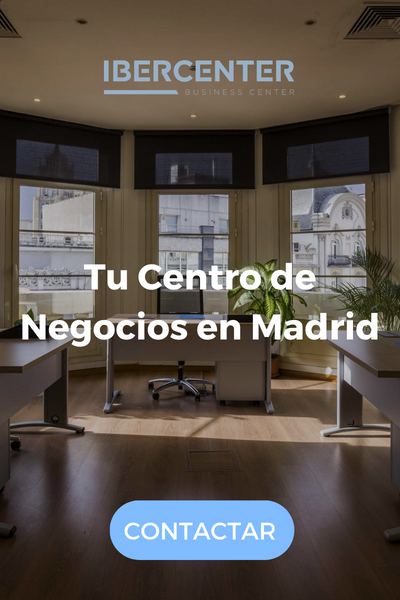SEO Explained Without Technicalities (But With Impact)
Hello, brave businessman, entrepreneur or marketing director! Welcome to the wild digital world. A place where you have an amazing website, a revolutionary product and a service that could change the world… but if Google doesn’t know, to your future customers, you’re like a ninja in the night: completely invisible.
This is where SEO comes in.
What is SEO (Search Engine Optimization)?
Think of it as the art of whispering Google in its ear to fall head over heels in love with your website. It is not black magic, it is not a pact with dark deities of technology; It’s a combination of science, a bit of art, and a lot of strategy. It is the set of techniques that we apply to our website so that search engines (and now artificial intelligence assistants) understand it, consider it relevant and show it in the top positions when someone searches for what you offer.
And why is it so crucial? Because 93% of online experiences start with a search engine. If you’re not there, you’re losing.
Bottom line: SEO is the organic (and powerful) way to drive qualified traffic to your website, without paying for each click like in ads.
What happens if you don’t do SEO?
- Your website is left in digital 🫥 limbo
- Google doesn’t understand who you are or what you do.
- AI assistants are not going to recommend you.
- Your competitors (who do SEO) take your potential customers.
The new scenario: Google and AI assistants
From search engines to conversational answers
Before, people were looking for things. Now it asks an AI things. For example:
“Where to rent a premium meeting room in Madrid?”
That’s not just where Google comes in. Enter Siri, Alexa, ChatGPT, etc. If your content isn’t structured and optimized, these AIs don’t see you. and, therefore, they do not recommend you.
How does traditional SEO affect this new context?
SEO is still key, but now the format of the content also matters. AI wants clear, fast, and well-organized answers.
The key? Master both classic SEO and the new conversational and semantic approach.
But fear not. You don’t need to be a technical guru to understand it. From our experience at Ibercenter and with the help of our trusted marketing agency Digitalvar, we have prepared this step-by-step guide, with a language for humans, so that you can get down to work.
Buckle up, we’re taking off to the first page of Google!

Step 1: Digital scavenger hunt (keyword research)
Every SEO journey starts with a map, and in our case, the map is made of words: the keywords. These are the terms that your potential customers type into the Google search bar. Your mission, if you decide to accept it, is to find out what they are.
It’s not a matter of guessing. It’s all about investigating. Think like your customer. If you were a creative entrepreneur, what would you look for, probably “flexible workspaces in Madrid”, “office rental for days in the center of Madrid” or “creative meeting rooms“. If you were a company, you would search for “premium office in Azca” or “all-inclusive office rental Madrid”.
Types of Keywords:
- Short-tail: These are short and generic, such as “SEO” or “offices.” They have a lot of search volume, but the competition is fierce and the user’s intent unclear.
- Long-tail: These are more specific phrases, such as “step-by-step guide to SEO for SMBs.” They have fewer searches, but bingo!, the person looking for this knows exactly what they want and is much closer to becoming a customer.
Tools that can help you:
- Google Keyword Planner
- SEMrush
- Ahrefs
- Ubersuggest
- AnswerThePublic
Or even the suggestions that Google itself gives you when searching are a good starting point, bet on long-tail keywords: more specific = less competition + more purchase intention.
Spend time on this phase. Good keyword research is the foundation on which your entire SEO strategy is built.
Step 2: Putting the House in Order (On-Page SEO)
Once you have your keywords, it’s time to tidy up your own home: your website. On-Page SEO is about optimizing all the elements within your website so that it is irresistible to both users and Google.
- Title Tags and Meta Descriptions: The title is the first thing you see in Google results (that big, clickable blue line). The meta description is the small text that appears underneath. They should be like a movie trailer: short, exciting, and make it clear what the content is about, including your main keyword.
- Headings (H1, H2, H3): These are the titles and subheadings within your content. They organize the information and tell Google what each section is about. Your main title should be H1 and there should only be one per page. The subtitles will be H2, H3, etc. This helps readability and SEO.
- Quality content, the king of the party: Google is getting smarter. The tricks of repeating a keyword a thousand times are no longer valid. You need to create content that is useful, original, well-written, and that truly answers your user’s question. Write for humans, not robots. If your content is good, people will stay longer, share it, and that will send Google very positive signals.
- Image optimization: Images are key! But they can slow down your website. Make sure they are compressed so that they weigh little. And don’t forget about “alt text.” It’s a description of the image that helps Google (and the visually impaired) understand what it shows. It’s another perfect place to use your keywords naturally!
- Internal links: Create a network within your own website. If you talk about the benefits of networking in an article, link to your event services page or another post on how to take advantage of shared spaces. This keeps the user browsing your site and distributes the “strength” of SEO across your pages.
Step 3: The ins and outs of the machine (technical SEO)
This is where we get a little nerdier, but don’t panic. Technical SEO makes sure that your website doesn’t have any barriers that prevent search engines from crawling and indexing it properly.
- Loading speed (WPO): If your website takes more than 3 seconds to load, you’ve lost almost half of your visitors. Patience on the internet is a scarce commodity. Use tools like Google’s PageSpeed Insights to see how to improve.
- Responsive design (Mobile-First): Most searches are done from mobile. Your website should look and work perfectly on any device. Google knows this and prioritizes mobile-friendly websites. There is no excuse!
- SSL certificate (HTTPS): See that little green padlock next to the URL? That means the web is secure. It is a positioning factor confirmed by Google and generates trust in your users. If you’re still on HTTP, it’s time to switch.
- Sitemap (sitemap.xml) and robots.txt: The sitemap is a map of your website that you give to Google so that no important pages are missed. The robots.txt file gives you instructions on which pages you should not crawl (such as internal admin pages).
Step 4: Making Friends on the Internet (Off-Page SEO)
Off-page SEO is everything you do outside of your website to improve your reputation and authority. The main task here is link building.
A link from another website to yours (called a backlink) is like a vote of confidence. If an important website in your sector links to you, Google thinks: “Hey, if this prestigious website recommends this other one, it must be good”.
How to get links?
- Create content so good that people want to link to it naturally.
- Collaborate with other blogs in your sector (guest posting).
- It is featured in directories of local businesses and media.
- Participate in industry events, collaborate with other businesses.
And here we come to a crucial point for any business with a physical location: Local SEO. If you want to attract customers to a specific area, you need to tell Google. The star tool is the Google Business Profile (formerly Google My Business).
It’s your free showcase on Google and Google Maps. Fill it in with as much information as possible: address, telephone number, opening hours, photos, services, etc.
For a company looking to establish itself in the heart of Madrid, such as those that choose Ibercenter’s flexible workspaces in strategic locations such as Azca, Gran Vía or Velázquez, having an optimized Google Business Profile with that prestigious address is a tremendous boost for local SEO.
Step 5: Talking to the Robots (SEO for AI Assistants)
The future is already here. Searches are no longer just typed, they are spoken! “Hey Siri, where is a 10-person meeting room near me?” Voice assistants and new AI-powered search experiences (such as Google’s SGE) are changing the rules of the SEO game.
How do you prepare for this?
- Think conversations: Optimize for full questions and natural language. Instead of “room rental Madrid”, think about “what is the best place to rent a meeting room in Madrid”. Long-tail keywords are your best friends here.
- Create frequently asked questions (FAQs): Respond directly to the questions your customers are asking. Each question and its answer are a golden opportunity to rank in voice searches.
- Structured data (Schema Markup): It is a code that “labels” the information on your website so that search engines understand it perfectly. You tell Google, “This is an event,” “This is an address,” “This is a rating.” This increases your chances of appearing in rich results (those with stars, prices, etc.).
- Local SEO is King: Voice searches have a very high local intent (“near me”). Having your Google Business Profile spotless is more important than ever.
Step 6: The Data Detective (Measure, Analyze, and Adapt)
SEO is not an “I do it once and forget it” action, it’s like the gym: it takes consistency. It is an ongoing process. What worked yesterday may not be working tomorrow. That’s why you need to become a data detective.
- Google Analytics: It will tell you how many people visit your website, where they come from (hopefully from Google!), what pages they visit and how long they stay.
- Google Search Console: This is your direct line to Google. It tells you why you’re being found, where you appear, if there are technical errors on your website, and who’s linking to you.
Review these tools at least once a month and analyze:
- What content works best?
- Which pages have a high bounce rate?
- Which pages attract the most visits?
- Where do your users come from?
- What keywords are ranking you?
Analyze, optimize, adjust, and republish.
SEO is a cycle.
SEO is a marathon, not a sprint.
Case study: how companies like Ibercenter boost their visibility with SEO
Ibercenter, with offices in Azca, Gran Vía and Velázquez, understood that a beautiful website is not enough. For this reason, he has worked on:
- Create content aimed at specific buyers: from corporate executives to digital nomads.
- Rank in searches such as:
- “Premium office rentals in Madrid”
- “Meeting rooms with projector on Gran Vía”
- “Spaces for business events in the center of Madrid”
- Use her blog to solve real doubts: from guides to productivity tips or networking.
- Optimize your site’s technical SEO to ensure speed, accessibility, and user experience.
The result: more visibility, more qualified leads, and more conversions.
Conclusion: conquer the digital world!
You’ve done it! You’ve reached the end of this intensive guide to SEO. Now you know that to stop being the invisible business of the internet, you need a plan. A plan that starts with understanding your customers (keywords), getting your house in order (On-Page), fixing the pipes (Technical), making influential friends (Off-Page) and learning to speak the language of the future (AI).
SEO may seem daunting, but it’s the most powerful marketing asset you can build in the long run. It’s the engine that will work for you 24/7, attracting qualified clients while you sleep.
So put on your digital superhero cape, start with the first step, and don’t stop. The road to the top of Google is an exciting adventure and, I assure you, the results are worth it.
And if you are looking for a space where you can work all this with style, comfort and good vibes… you already know that Ibercenter has the perfect flexible office for you 😉 See you on the first page




